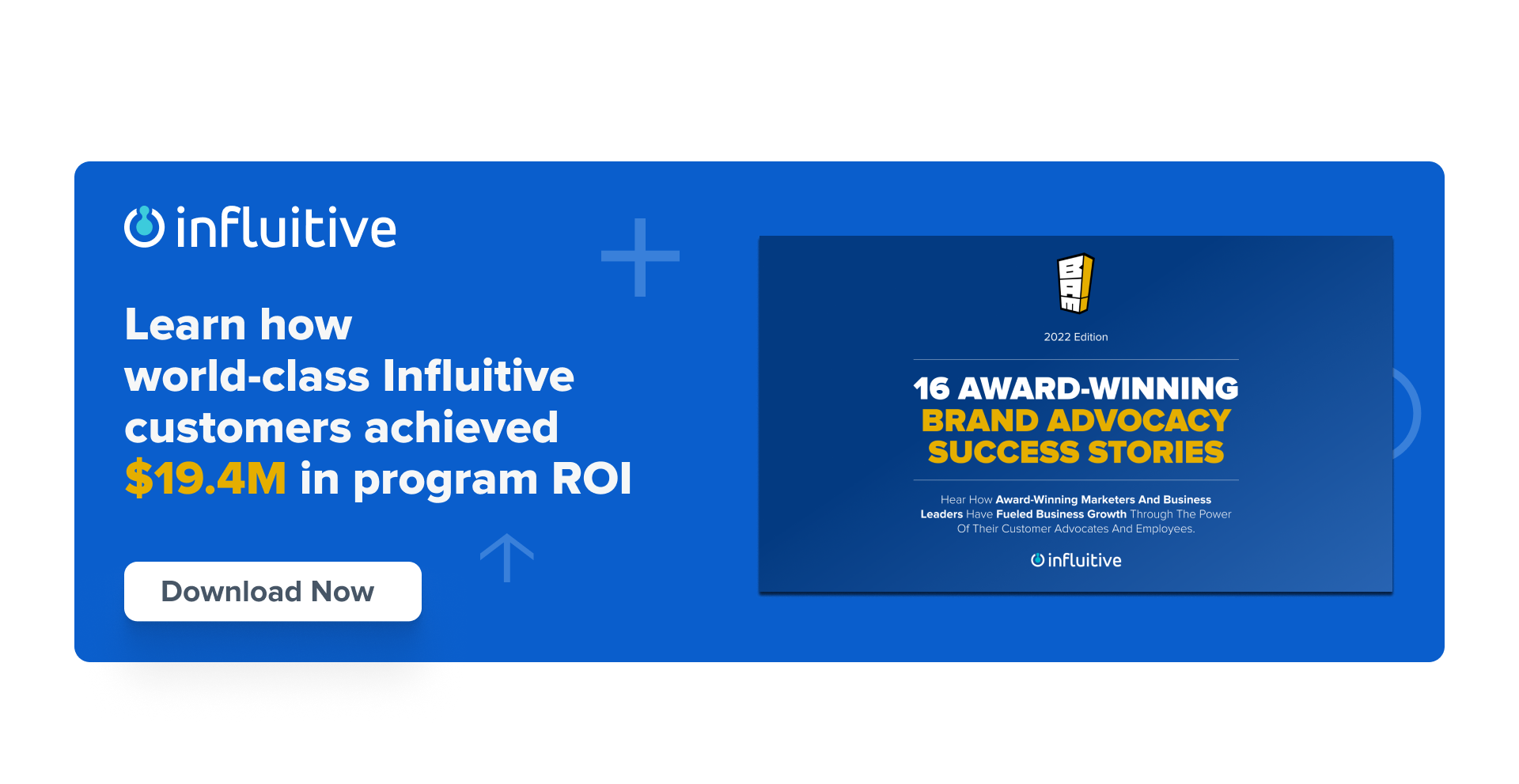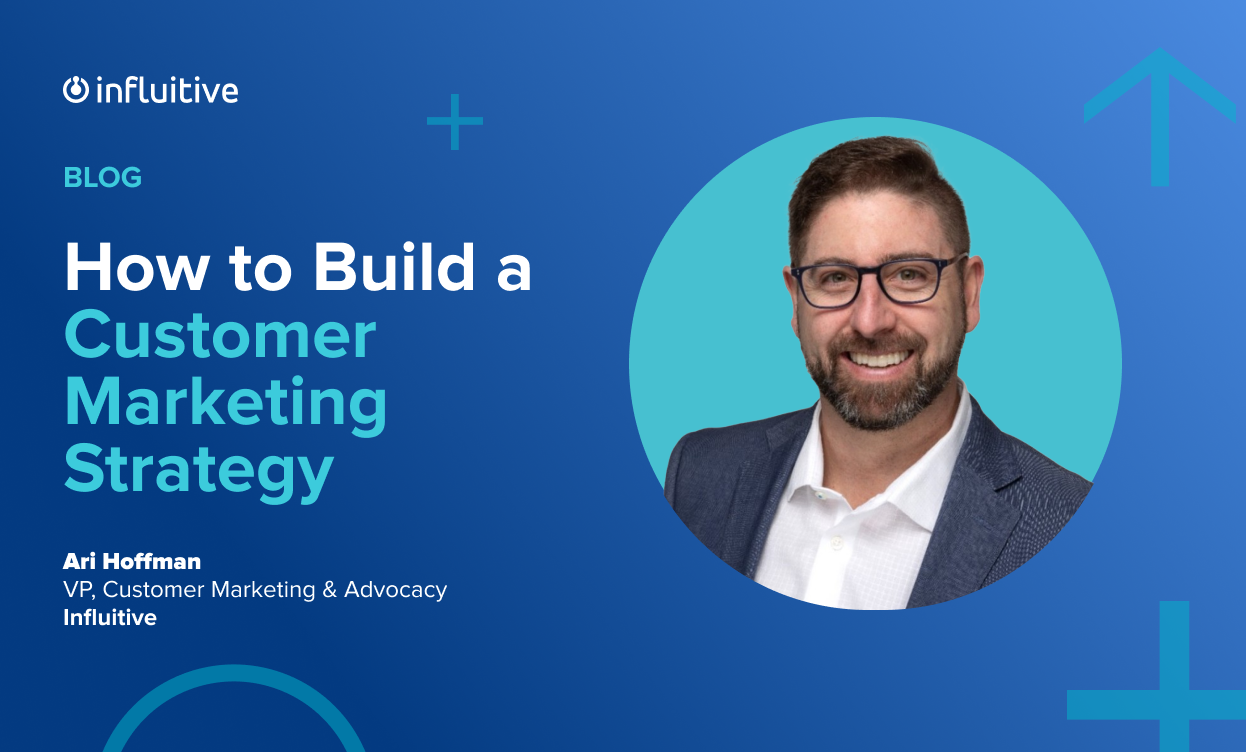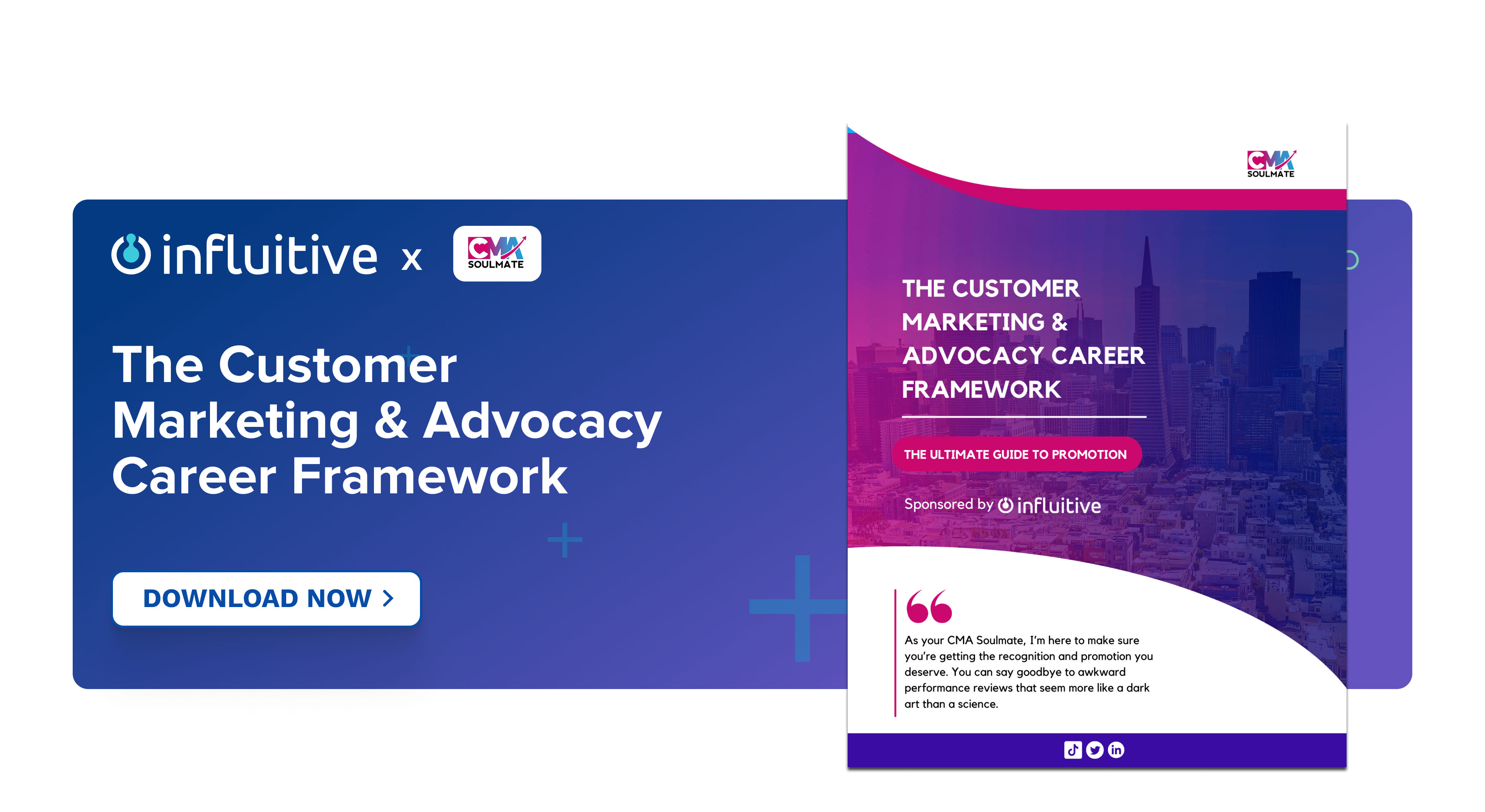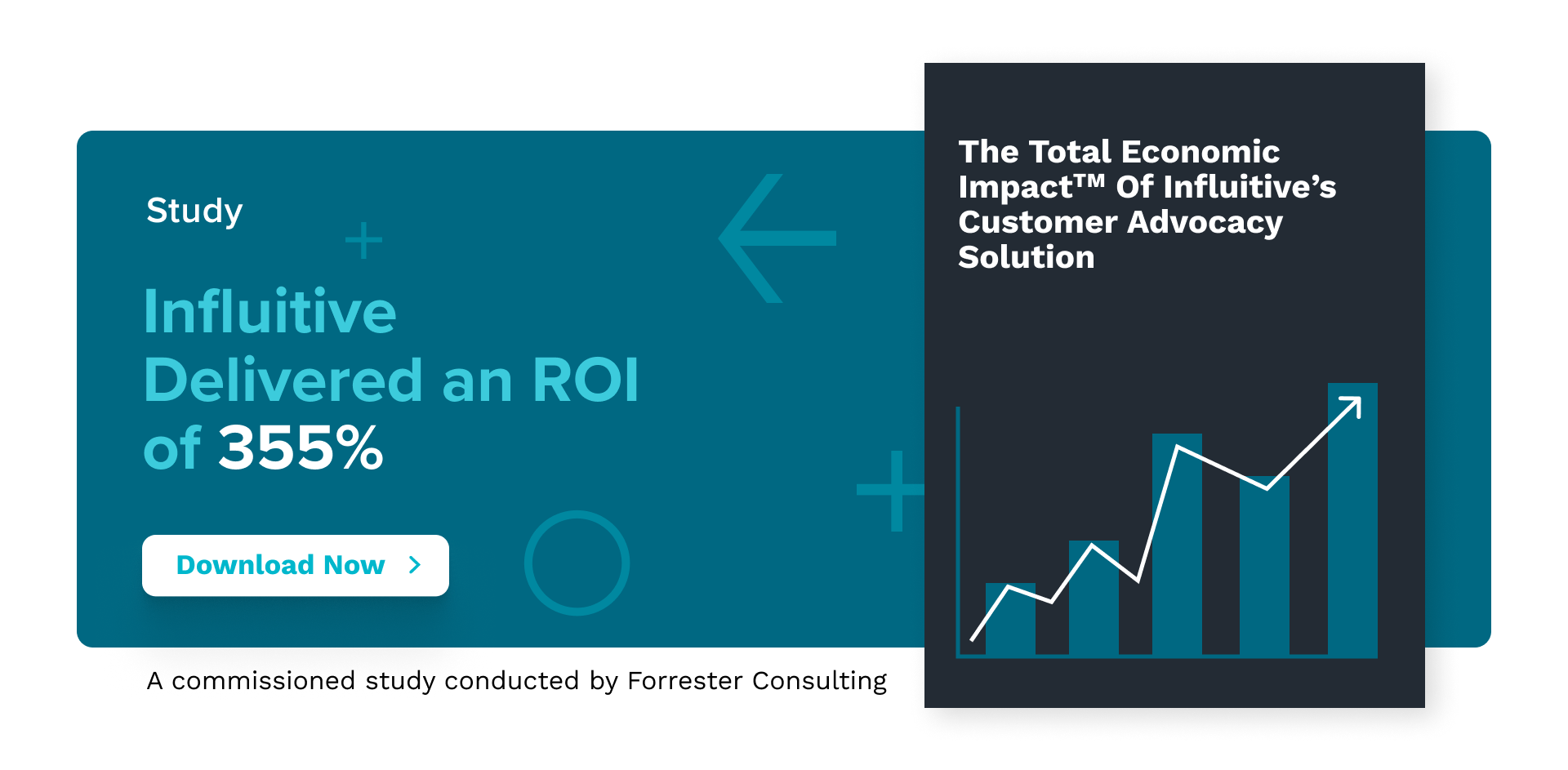The reason why customer marketing is the fastest-growing B2B job is because of one factor: the continuous and ever-growing noise created by demand generation.
We are all hit with ads and marketing assets everywhere – TV, radio, computers, cell phones, (even my watch gets occasional ads on it). Not only that, but as marketers, we’ve gotten really good at unpacking the benefits of our products/services and companies.
So, as a result, we actually slam the airwaves with valuable noise. From spitting metrics that paint awesome benefits to telling super-detailed case studies, people are mostly seeing valuable content. The only thing that cuts through all that valuable noise is your customers’ voice.
In B2B, people don’t associate with brands; they connect with people who work at those brands. They want to be like the thought leader they really respect and want to emulate the same success the VP of Marketing at that company is seeing. They prefer hearing from and doing business with people they know, like, and trust, not slick marketing copy.
Hence, when you put a real person behind success, that success becomes more tangible and real. That’s why, for example, champion spotlights and customer stories are displacing case studies. People want to see the human beings behind the wins – and that’s why customer marketing is now so critically important. Not only that, but customer marketing helps you succeed in the demand generation AND post-sales side of the business (i.e., retention, upsells, and cross-sells).
What is a Customer Marketing Strategy?
A customer marketing strategy is two things: First, a reactive strategy that works on what you’re already doing. Second, a proactive, long-term lifecycle plan that propels your content marketing to an optimal state that tightly supports pipeline growth.
So, how does all that work out in practice? Well, think of this analogy: You have a plane that’s already in flight, but it has issues. You’re applying duct tape to the current wings (this is your reactive strategy), but at the same time, you’re building new wings on top (your long-term play) so you can both keep the plane in flight and upgrade it at the same time.
The reactive side of your strategy is the work you do to keep your customer marketing moving as-is. This typically involves getting reviews, references, and referrals (plus user-generated content).

It’s work you have to do to keep your customer marketing in motion (like getting reviews, building case studies, etc). But it isn’t optimal and should only be your short-term focus that leads to the next part – i.e., the long-term strategy.
The proactive, long-term lifecycle approach is about taking your content marketing strategy to an optimal state. This involves closely collaborating with the wider team of your company, like sales, customer success, product, and others. It also requires you to set up and implement a 90-120-day plan to build programs, processes, and governances for leveraging customers.
How to Build a Customer Marketing Strategy in 7 Steps

Step 1: Survey Your Customers
Start your customer marketing strategy by surveying your customers about their buying journey.
Ask all of your recently closed wins (i.e., net-new, expansion, and upsell/cross-sell logos) what they found to be the most valuable marketing materials when making their decision. You’ll want to uncover every type of content they found useful, be it Gartner reports, customer stories, case studies, G2 reviews, etc.
Using those insights, prioritize what you need to build out to help sales and sales funnel velocity.
Basically, identify the content that moves customer decision-makers to act – i.e., sign onto your product or service, agree to a cross-sell or up-sell, etc. Your sales team will tell you what helps.
However, sales will call for multiple items, such as more webinars, more customer stories, and so on – but how do you know what’s the most impactful asset?
Step 2: Survey Your Sales Team
To hone in on priority marketing assets, ask your sales team, “If you had a magic wand and could get one net-new asset from marketing – and it’s what you need the most – what would it be?”
Next, ask the sales team to rank the top three assets they use today to help them close the most deals. With this information, you’ll uncover what types of content works best.
Step 3: Prioritize Overlapping Activities
When you get the results of the sales team survey, take all of the responses and get the sales team to rank each item from 1 to 10. Next, compare that list to what you learned from your key customers. Now, look at the items that overlap between the two groups.
These overlapping items come from your sales team and your customers’ buying journey – and are your high-priority assets. Focus on delivering these specific marketing items. These could include assets (like customer stories), events, and programs.
Step 4: Build Out a Maturity Model
Your maturity model maps out the journey orchestration — how you’ll increase adoption and engagement throughout the customer lifecycle.
Step 5: Collaborate With the Wider Team
You’ll need to work with each department, i.e., marketing, sales, customer success, product, and so on. Your goal should be to identify shared objectives and metrics that all teams can measure themselves on. In turn, you want to develop an engagement model and governance rules about how each team will work with you (the customer marketer).
Step 6: Set KPIs
Get objectives and metrics from different teams. Set primary goals which will align on adoption, engagement, retention, expansion, net-new revenue influence, and sales-funnel velocity.
Step 7: Leverage Automation
When scaling a customer marketing program, you need to automate. This is the only way to drive more output without additional headcount or budget. However, you need the right tools and technology stacks to optimally scale your customer marketing and advocacy program.
Conclusion: A True Customer Marketing Strategy is a Customer-Driven Marketing Strategy
Your customer is your central operating system. Everything revolves around how to capture or acquire, how to convert, how to engage, how to retain, and how to expand with your customer.
Without that process, you don’t have a viable business model.
Overall, customer marketing is your bridge that connects community, education, sales, service, and product for your customer. It’s how you continue to keep the customer at the center of all business decisions.














































